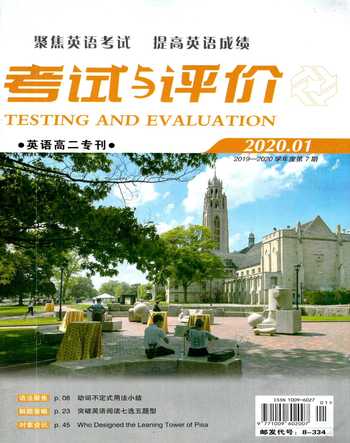Hunter—Gatherers
2020-09-10李毅
李毅
A people or society which depends for food on what it can gather or hunt is called a hunter-gathering society. Their activities can include fishing and the gathering of wild berries, other plants, shellfish and insects. In the early history of man, most people obtained their food supply in those ways.
An economy based on hunting and gathering must depend on being allowed to rove (流浪) over a large piece of land. It is estimated that each person must have from 7-500 square miles available to obtain enough food by these methods. Permanent supplies of food are only available to those who have a continuous supply of what they need.
For example, the Native Americans who lived in the Pacific Northwest had an abundant supply of food in the rivers and streams in that area. Fish and acorns (橡子) were their staples. Salmon was readily abundant especially. Communities became more permanent. The size of a group was bigger due to the availability of food in one place.
These conditions are not usually true, so most communities move on a regular basis. They take with them only what they can carry. Shelters must be put up or taken down easily. The huts or tents usually are made from plant materials or animal skins. The groups which travel together are generally small, maybe just an extended family. Sometimes several families form a band. Too large a group would use up all the resources in one area too quickly. About 30 people might be in a group which traveled by foot or up to 100 if they had horses or other means of transportation. The smaller groups in a larger area would know each other because of some broader relationship. They would get together may be once a year to keep a connection.
When both hunting and gathering are used for finding food, the men hunt the big game. Women and children gather plants, shellfish and insects. Mothers do not wean (使……断奶) their babies until the age of three or four, so they cannot be as mobile as the men. Children can be helpful in using their noise to drive animals in certain directions for the hunt.
Many cultures combined the hunting and gathering method with the use of agriculture. For example, early Native Americans, such as Arctic, American sub-arctic, Northwest Coast and California Indians used only foraging (搜尋) to sustain life. Plains Indians grew maize in addition to their foraging activities. In contrast, the Southwest Indians used foraging just as a supplement to their agricultural production.
By about 1500 B.C., most people groups came to rely on agriculture of some sort in addition to their hunting and gathering. At times, hunter-gatherers would find their
territories (領地) decreased by those who became farmers and took their land. This problem is very well known with the Native American tribes in the United States. As the settlers moved west and fenced in the land, the Native Americans who depended on hunting for much of their food were forced farther west and finally had to give up their former ways of obtaining food.
Although many American and Australian groups at that time still were hunter-gatherers, groups in most other parts of the world came to rely on growing food and just adding animals and gathered food as a supplement. The hunting and gathering way of life has mostly disappeared except for random societies. The Okiek of Kenya, some Australian aborigines, Torres Strait Islanders of Australia and North American Inuit groups still practice this lifestyle.
Answer the following questions.
1. Which of the following statements is TRUE?
A. No hunter-gatherers exist today.
B. Hunter-gatherers exist today in
Australia.
C. In a hunter-gatherer society, most
groups consist of about 500 people.
D. Native Americans were not a hunter-gatherer society.
2. Which of the following is the amount of land necessary per person to sustain life in a hunter-gatherer society?
A. 7-500 square miles.
B. 4-50 square miles.
C. 10-100 square miles.
D. 100-1,000 square miles.
3. Which of the following were the staple foods for the Native Americans who lived in the Pacific Northwest?
A. Fish and acorns.
B. Berries and fish.
C. Acorns and berries.
D. Nuts and berries.
4. Which of the following is a society which still practices hunting and gathering?
A. Natives of Malaysia.
B. Native American tribes in the southern United States.
C. Australian aborigines.
D. Shetland Island natives.
5. By which of the following dates did most people begin to rely on agriculture besides their hunting and foraging?
A. 250 B.C. B. 1500 B.C.
C. 250 A.D. D. 600 B.C.
6. In which of the following countries do the Okiek people live?
A. France. B. Peru.
C. Ecuador. D. Kenya
